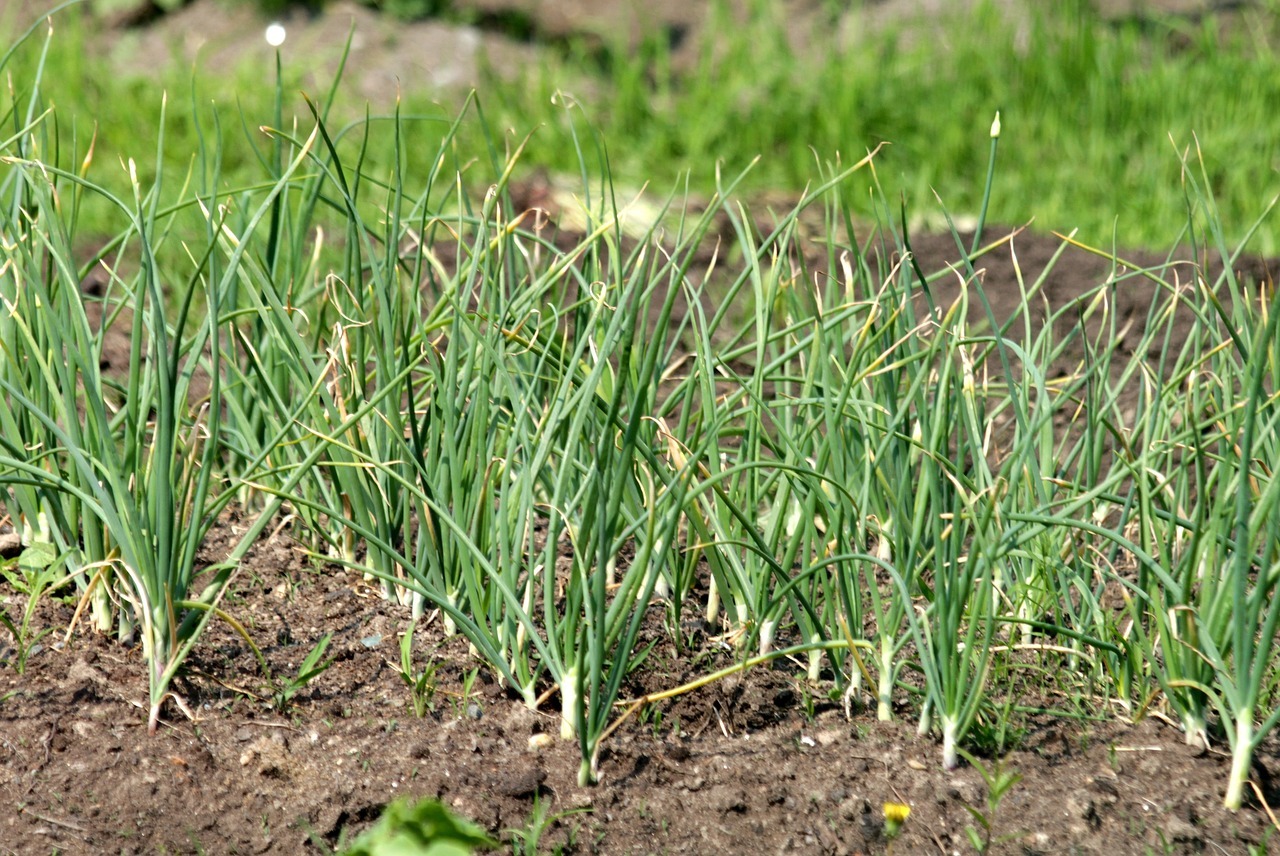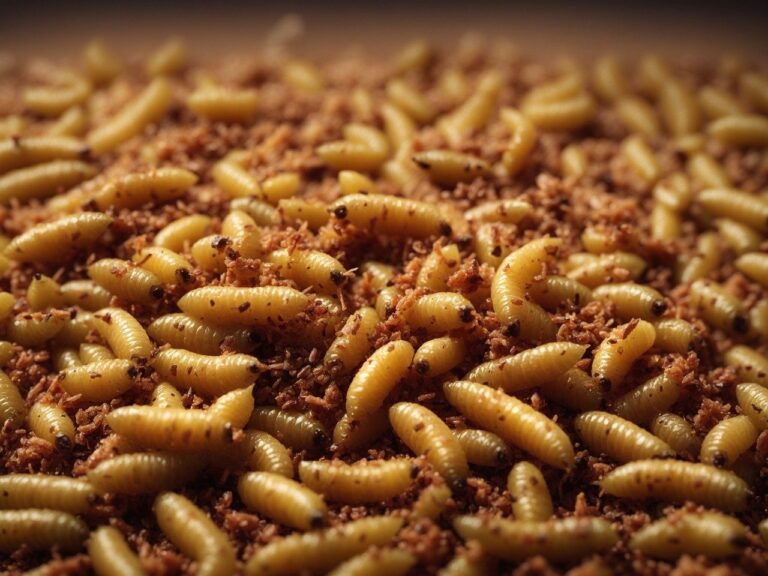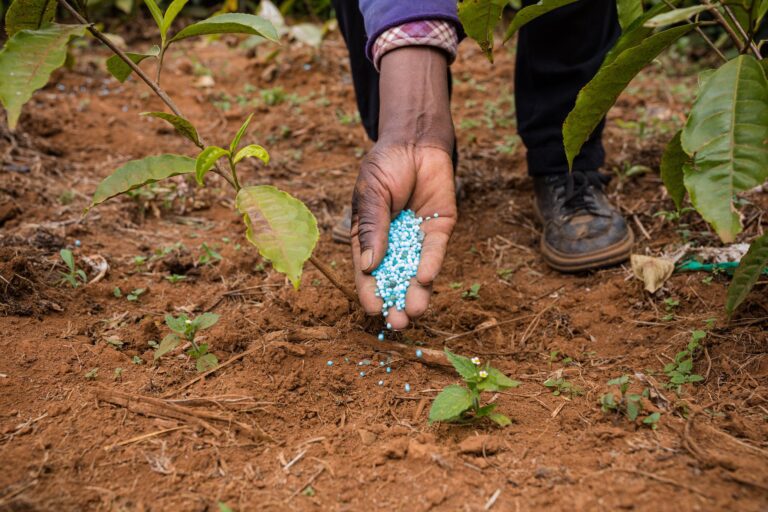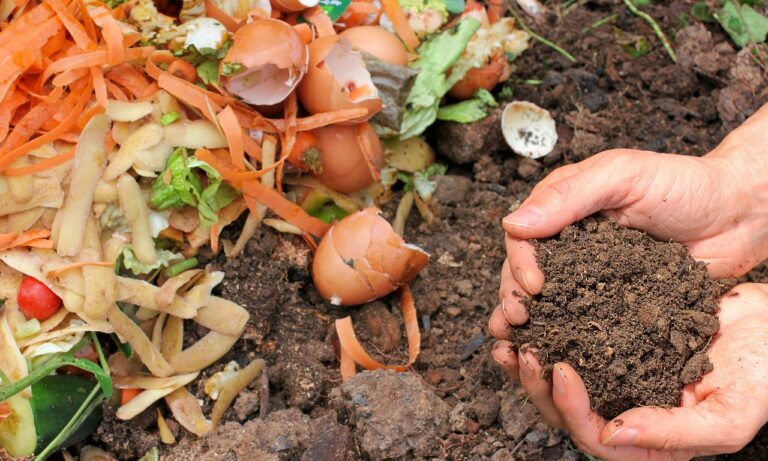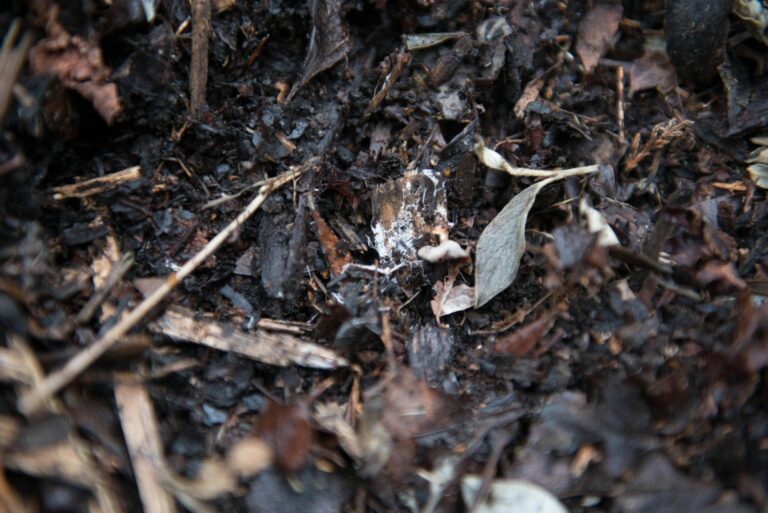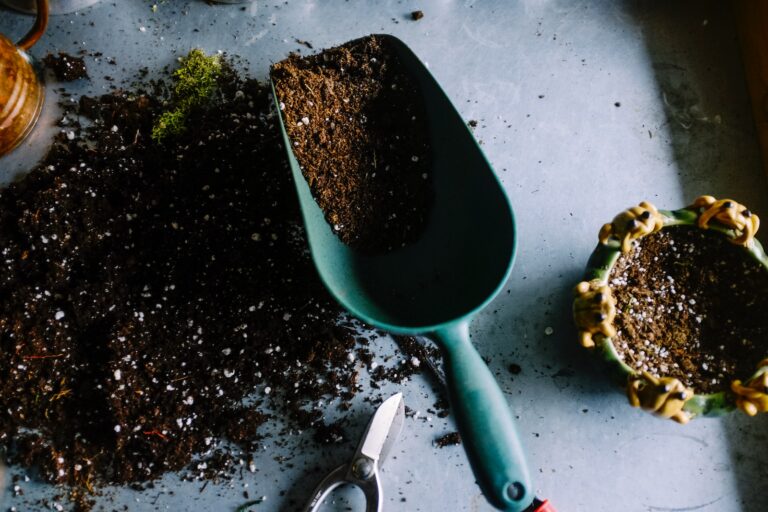As I sink my hands into the dark, fertile soil of my garden, I can’t help but wonder: what compost is the key to unlocking the full potential of my garlic crop?
With so many options available, it’s important to choose the right compost to nourish and support the growth of these pungent bulbs.
In this discussion, we will explore the benefits of using compost for garlic, different types of compost to consider, and the best practices for applying and maintaining compost to enhance the flavor and yield of your garlic harvest.
Prepare to unearth the secrets to garlic-growing success.
Benefits of Using Compost for Garlic
Using compost for garlic provides numerous benefits, improving soil fertility and enhancing the overall growth and health of the garlic plants. Compost, a nutrient-rich organic matter, contains essential elements that promote healthy root development and nutrient uptake in garlic plants. The decomposition of organic materials in compost releases nutrients such as nitrogen, phosphorus, and potassium, which are vital for plant growth. These nutrients are slowly released in a form readily available to plants, ensuring a continuous supply throughout the garlic’s growing season.
In addition to improving soil fertility, compost also enhances the flavor of garlic. The organic matter in compost enriches the soil with beneficial microorganisms that aid in breaking down organic compounds into simpler forms. This breakdown process releases aromatic compounds that contribute to the distinct flavor of garlic. Furthermore, compost helps maintain soil moisture, preventing the garlic plants from drying out and ensuring optimal growth and flavor development.
Research has shown that using compost as a soil amendment for garlic production leads to increased bulb size, yield, and quality. The improved soil structure and increased nutrient availability foster vigorous root growth, resulting in larger and healthier garlic bulbs. With the enhanced flavor from the compost-enriched soil, garlic harvested from compost-amended beds exhibits a more pronounced and well-rounded taste.
Types of Compost for Garlic
Different types of compost can be used to enhance the growth and health of garlic plants. When it comes to choosing the right compost for garlic, there are several options available. One popular choice is homemade compost, which offers numerous advantages for garlic cultivation.
Homemade compost is created through composting techniques that involve the decomposition of organic matter, such as kitchen scraps, yard waste, and plant material. This process produces nutrient-rich compost that can improve soil structure, increase water retention, and promote beneficial microbial activity. Additionally, homemade compost is cost-effective and environmentally friendly, as it reduces the amount of waste that goes to landfills.
To further understand the different types of compost suitable for garlic, the following table provides a comparison:
| Compost Type | Description | Advantages |
|---|---|---|
| Homemade Compost | Made from organic matter through composting techniques | Cost-effective, environmentally friendly, nutrient-rich |
| Commercial Compost | Purchased from garden centers or nurseries | Convenient, consistent quality, ready to use |
| Manure-based Compost | Composed of animal manure and bedding materials | High in nutrients, improves soil fertility |
| Leaf Mold Compost | Composted leaves and other plant material | Increases soil organic matter, improves drainage |
When selecting a compost for garlic, it is important to consider the specific needs of the plants and the characteristics of the compost. Homemade compost provides a sustainable option with numerous benefits, while commercial compost offers convenience and consistent quality. Manure-based compost and leaf mold compost can be effective choices for improving soil fertility and drainage, respectively. Ultimately, the choice of compost depends on the individual gardener’s preferences and the specific requirements of their garlic plants.
Homemade Compost for Garlic
One of the most effective methods for enhancing the growth and health of garlic plants is by utilizing homemade compost, which offers a multitude of benefits for garlic cultivation. Homemade compost can provide essential nutrients, improve soil structure, and promote beneficial microbial activity, all of which are crucial for the optimal growth and development of garlic.
When it comes to garlic composting techniques, there are several options to consider. Here are some effective techniques to create high-quality compost for garlic:
- Hot composting: This method involves creating a compost pile that reaches high temperatures, ranging from 130 to 160 degrees Fahrenheit. The heat helps break down organic materials quickly, killing weed seeds and pathogens in the process.
- Vermicomposting: Using worms to decompose organic materials can result in nutrient-rich worm castings, which make an excellent compost for garlic. Vermicomposting is a great option for those with limited space or who want to compost indoors.
- Green and brown materials: A balanced compost pile includes a mixture of green materials, such as kitchen scraps and fresh grass clippings, and brown materials, such as dried leaves and straw. This combination provides a diverse range of nutrients and helps maintain the ideal carbon-to-nitrogen ratio.
- Aeration and turning: Regularly aerating and turning the compost pile helps accelerate the decomposition process and prevents odors. This practice ensures that garlic plants receive a well-balanced and nutrient-rich compost.
Commercial Compost Options for Garlic
To explore the commercial compost options available for garlic cultivation, we can consider a range of nutrient-rich products specifically designed to support the growth and development of garlic plants. When it comes to finding the right commercial compost suppliers for garlic, it’s essential to evaluate the quality and cost effectiveness of the options.
One cost-effective compost option for garlic cultivation is mushroom compost. Mushroom compost is a byproduct of mushroom production and is rich in organic matter, making it an excellent choice for garlic plants. It provides essential nutrients such as nitrogen, phosphorus, and potassium, which are vital for garlic growth.
Another viable option is poultry manure compost. Poultry manure is a rich source of nitrogen, phosphorus, and potassium, making it an ideal choice for promoting the healthy development of garlic plants. This compost option is readily available from commercial suppliers and is often reasonably priced.
In addition to mushroom compost and poultry manure compost, other commercial compost options for garlic cultivation include cow manure compost and worm castings. These products are known for their nutrient-rich composition, which supports the growth of garlic plants.
When selecting commercial compost suppliers, it’s crucial to consider the quality and cost effectiveness of the options available. By choosing cost-effective compost options, garlic cultivators can ensure the healthy development of their garlic plants while keeping their expenses in check.
Organic Compost for Garlic
When it comes to choosing the best compost for garlic, organic options are often preferred for their numerous benefits.
Organic compost is made from natural materials such as plant matter, animal manure, and kitchen scraps, without the use of synthetic chemicals or pesticides.
This type of compost is rich in essential nutrients, microorganisms, and beneficial fungi, which promote healthy soil and enhance the growth and flavor of garlic.
Types of Compost
Different types of organic compost can be used to improve the growth and health of garlic plants. When it comes to compost options for garlic, there are both homemade and commercial options available.
Here are some types of compost that you can consider:
- Homemade compost: This is compost that you can make yourself using kitchen scraps, yard waste, and other organic materials. It’s a cost-effective and sustainable option for enriching your soil.
- Mushroom compost: Made from the spent substrate of mushrooms, this compost is rich in organic matter and nutrients. It can help promote healthy garlic growth.
- Worm castings: Also known as vermicompost, worm castings are the result of earthworm digestion. They’re nutrient-rich and can improve soil fertility.
- Composted manure: Manure from animals that have been fed a natural diet can be composted and used as a nutrient-rich soil amendment.
Benefits of Organic Compost
One must understand the significant benefits of using organic compost for garlic in order to maximize its growth potential and overall health.
Organic compost provides numerous advantages for garlic cultivation in organic gardening. Firstly, organic compost improves soil structure by enhancing its ability to retain moisture and nutrients, promoting healthy root development. This leads to improved nutrient uptake, resulting in stronger and more vigorous garlic plants.
Additionally, organic compost contains a diverse range of beneficial microorganisms that contribute to soil fertility and plant health. These microorganisms break down organic matter in the compost, releasing nutrients that are readily available to the garlic plants.
Furthermore, organic compost helps suppress soil-borne diseases and pests, reducing the need for chemical pesticides.
Nutrient-Rich Compost for Garlic
When it comes to garlic, choosing the right compost is crucial for optimal growth and development.
Nutrient-rich compost provides essential elements that garlic needs to thrive, such as nitrogen, phosphorus, and potassium.
These nutrients promote strong root growth, increased bulb size, and improved overall health of the garlic plants.
Compost Types for Garlic
To ensure optimal growth and nutrient absorption, garlic thrives when enriched with nutrient-rich compost. When choosing the best compost for garlic, consider these compost types and their benefits:
- Manure Compost: Composted manure contains high levels of nitrogen, phosphorus, and potassium, essential nutrients for garlic growth.
- Leaf Compost: Made from shredded leaves, this compost type is rich in organic matter and helps improve soil structure and drainage.
- Kitchen Compost: Composting kitchen scraps like fruit and vegetable peels can provide a nutrient-rich compost that garlic plants love.
- Worm Compost: Also known as vermicompost, this compost is produced by earthworms, resulting in a nutrient-dense and microbe-rich soil amendment.
Benefits of Nutrient-Rich Compost
Enriching garlic with nutrient-rich compost offers numerous benefits for its growth and development.
Compost benefits the garlic plant by providing essential nutrients, improving soil structure, and promoting beneficial microbial activity.
Nutrient-rich compost contains a balanced mix of organic matter, such as decomposed plant material and animal manure, which releases nutrients slowly over time. This slow-release of nutrients ensures a steady supply to the garlic plant, preventing nutrient deficiencies and promoting healthy growth.
Additionally, compost improves soil structure by increasing its water-holding capacity, aeration, and drainage, which are crucial for garlic root development.
Furthermore, composting methods such as vermicomposting and aerobic composting support the growth of beneficial soil microorganisms, which enhance nutrient availability and disease resistance in garlic plants.
Best Composting Practices for Garlic
For optimal results in composting garlic, it’s recommended to incorporate a balanced mix of organic materials. This will provide the necessary nutrients for the garlic plants to grow and thrive. When composting garlic, it’s important to follow proper composting techniques and use the right composting equipment.
Here are some best composting practices for garlic:
- Use a compost bin or a compost pile: Having a designated space for composting will help in managing the process more efficiently. A compost bin or a compost pile allows for proper aeration and decomposition of the organic materials.
- Use a mix of green and brown materials: Green materials, such as kitchen scraps and fresh plant material, provide nitrogen, while brown materials, like dried leaves and wood chips, provide carbon. A balanced mix of both will create a nutrient-rich compost.
- Turn the compost regularly: Turning the compost helps in aerating and mixing the materials, which speeds up the decomposition process. This ensures that the compost is ready for use in a shorter amount of time.
- Keep the compost moist but not waterlogged: The compost should be kept moist, similar to a damp sponge. This will help in the decomposition process. However, be careful not to overwater, as it can lead to waterlogged compost and hinder the breakdown of organic materials.
How Compost Enhances Garlic Flavor
As a researcher, I’ve found that using compost in garlic cultivation can significantly enhance the flavor of the garlic.
The nutrient enrichment provided by compost improves the overall health of the soil, leading to increased garlic yield and quality.
Soil Nutrient Enrichment
Compost, with its rich array of nutrients, enhances the flavor of garlic by providing essential elements that promote optimal growth and development. When it comes to soil nutrient enrichment for garlic, compost plays a crucial role. Here are a few reasons why:
- Soil pH adjustment: Compost helps to balance the pH level of the soil, creating an ideal environment for garlic growth. It neutralizes acidic or alkaline soils, ensuring that the pH remains within the optimal range of 6.0 to 7.5.
- Increased organic matter: Compost is packed with organic matter, which improves soil structure and enhances its water-holding capacity. This allows garlic plants to access water and nutrients more effectively, resulting in healthier growth.
- Nutrient availability: Compost releases essential nutrients slowly over time, providing a consistent supply to garlic plants. This ensures that the plants receive the necessary nutrients for their growth stages.
- Beneficial microorganisms: Compost is teeming with beneficial microorganisms that promote nutrient cycling and improve soil health. These microorganisms break down organic matter, making nutrients more readily available to garlic plants.
Increased Garlic Yield
To further explore the impact of compost on garlic yield and flavor, we now turn our attention to how compost enhances the development of garlic.
Composting techniques for garlic can result in increased garlic size, leading to a higher yield. When organic matter like kitchen scraps, grass clippings, and leaves are composted, they break down into rich humus, which is packed with essential nutrients.
This nutrient-rich humus, when incorporated into the soil, provides a steady supply of nitrogen, phosphorus, and potassium to the garlic plants. These nutrients are vital for the development of strong roots, healthy foliage, and robust bulbs.
Additionally, compost helps improve soil structure, allowing for better water retention and drainage, which further promotes garlic growth.
Compost Application Tips for Garlic
When it comes to compost application techniques for garlic, there are a few important factors to consider. These factors can greatly impact the growth and overall health of your garlic plants. Here are some key tips to keep in mind:
- Timing: Apply compost to garlic beds in the fall, before planting. This allows the compost to break down and release nutrients gradually over the winter, providing a fertile environment for the garlic to grow in the coming spring.
- Quantity: Apply a layer of compost about 2-3 inches thick to the garlic beds. This will ensure an adequate supply of nutrients for the plants without suffocating them.
- Mixing: Incorporate the compost into the soil by gently turning it with a garden fork. This will help distribute the nutrients evenly and improve the soil structure.
- Quality: Use well-aged and fully decomposed compost for garlic. This type of compost is rich in nutrients and will provide the necessary organic matter for healthy garlic growth.
Compost Maintenance for Garlic Plants
After applying compost to garlic beds before planting, it is important to maintain the compost to ensure optimal growth and health of the garlic plants. Compost maintenance involves several key tips and techniques that help to nourish the soil and provide the necessary nutrients for the garlic plants to thrive. Here are some compost maintenance tips and compost application techniques that can benefit garlic plants:
| Compost Maintenance Tips | Compost Application Techniques |
|---|---|
| Regularly water the compost | Apply compost in a thin layer |
| Turn the compost regularly | Mix the compost into the soil |
| Add organic matter as needed | Use compost tea as a foliar spray |
Watering the compost regularly is crucial to keep it moist and promote the decomposition process. This ensures the availability of nutrients for the garlic plants. Turning the compost regularly helps to aerate it, allowing for better decomposition and preventing the development of anaerobic conditions. Adding organic matter as needed replenishes the compost with fresh nutrients, enhancing its effectiveness. Compost tea, made by steeping compost in water, can be applied as a foliar spray to provide additional nutrients directly to the garlic plants.
Conclusion
In conclusion, using compost for garlic cultivation offers numerous benefits, including improved soil quality, enhanced nutrient availability, and increased resistance to diseases and pests.
Different types of compost, both homemade and commercial, can be used depending on individual preferences and availability. Organic compost is highly recommended to ensure the garlic remains free from harmful chemicals.
Following the best composting practices and regularly maintaining the compost will ensure healthy and flavorful garlic plants.
Overall, composting is a valuable technique to enhance the growth and quality of garlic.
